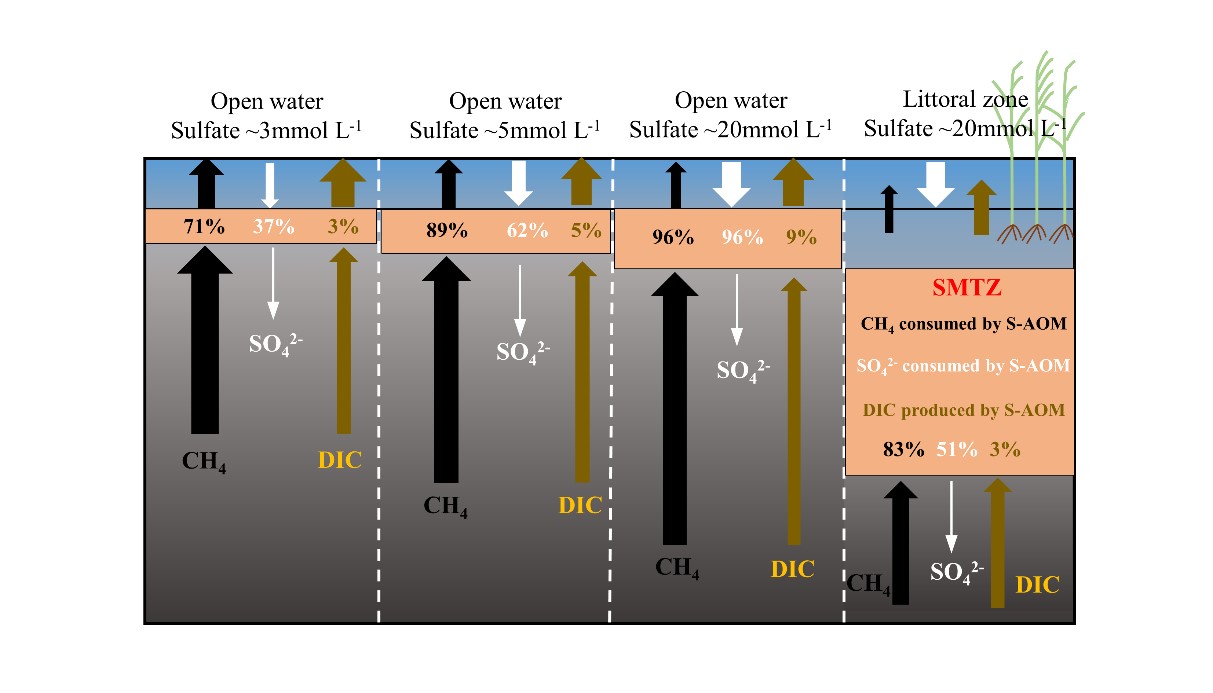Coastal wetlands are important sources of methane emissions, and understanding the mechanisms that control methane emissions from coastal wetlands is of great signifcance to global warming. In this study, spatiotemporal variations in pore-water geochemistry (concentrations of SO42-, CH4 and DIC as well as δ13C-DIC and δ13C-CH4) in the Beidagang wetland, Tianjin, China, were investigated to unravel factors controlling the role of anaerobic oxidation of methane in coastal wetlands. Results highlight the importance of sulfate-driven anaerobic oxidation of methane in coastal wetlands.
The consumption of methane and sulfate by S-AOM is more significant in coastal wetlands with high sulfate concentrations, with S-AOM consuming nearly all of the upward-diffusing methane (96%) and downward-diffusing sulfate (96%). The depth and width of the SMTZ show a clear spatial and temporal pattern, with active methanogenesis activity and upward high methane flux shoaling the SMTZ and increasing the risk of high methane emissions from coastal wetlands with low sulfate concentrations. Hence, desalinization of coastal wetland waters caused by human intervention will reduce the supply of sulfate from the water column to the sediment, weakening the S-AOM and impairing the barrier function of the SMTZ, further inducing high methane emissions in coastal wetlands.

Fig.1 Conceptual diagram illustrating the spatial variations of the SMTZ and the contribution of S-AOM to methane and sulfate depletion and DIC production in coastal wetland sediments
This work was supported by the National Natural Science Foundation of China (Grant Numbers: 41971123 and 42103052) and the National science & Technology Fundamental Resources Investigation Program of China (Grant Number: 2021FY101000).
Article information:
Wei La, Xiaokun Han, Cong-Qiang Liu, Hu Ding, Mingxuan Liu, Fusheng Sun, Siliang Li, Yunchao Lang*. 2022. Sulfate concentrations affect sulfate reduction pathways and methane consumption in coastal wetlands. Water Research, 118441.